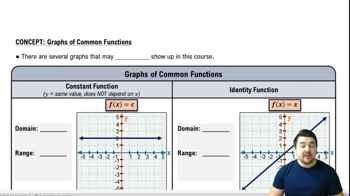Here are the essential concepts you must grasp in order to answer the question correctly.
Continuity of Functions
A function is continuous at a point if the limit of the function as it approaches that point equals the function's value at that point. For a function to be continuous over an interval, it must be continuous at every point within that interval. This concept is crucial for determining where a function does not have breaks, jumps, or asymptotes.
Recommended video:
Graphs of Common Functions
Types of Discontinuities
Discontinuities can be classified into three main types: removable, jump, and infinite. A removable discontinuity occurs when a function is not defined at a point but can be made continuous by defining it appropriately. Jump discontinuities happen when the left-hand and right-hand limits at a point do not match, while infinite discontinuities occur when a function approaches infinity at a certain point.
Recommended video:
How to Use a Calculator for Trig Functions
Interval Notation
Interval notation is a mathematical notation used to represent a range of values. It uses brackets [ ] to include endpoints and parentheses ( ) to exclude them. Understanding interval notation is essential for expressing the domain of continuity for functions, as it succinctly conveys which intervals are valid for the function's continuity.
Recommended video:
 Verified Solution
Verified Solution



 5:2m
5:2m